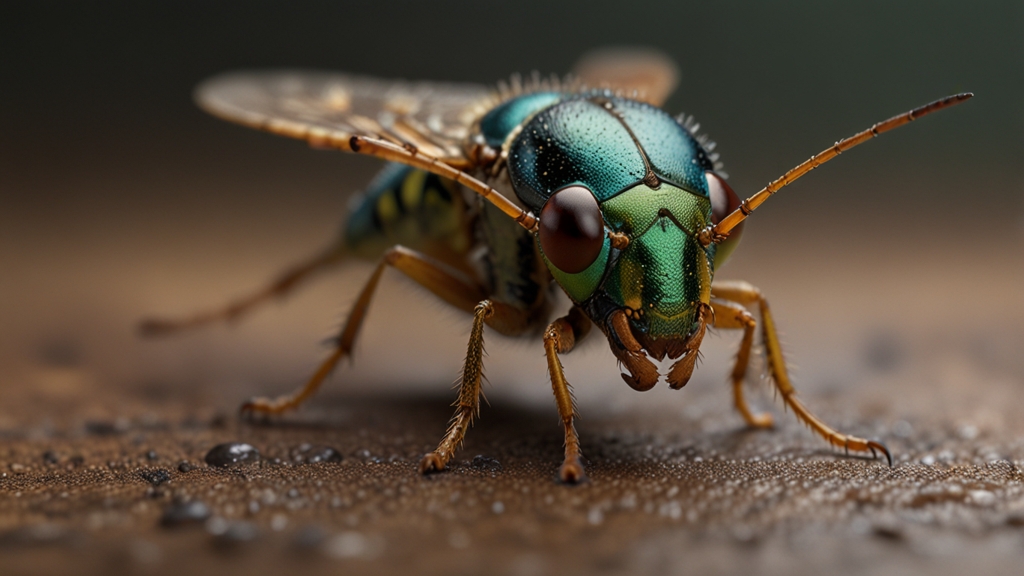Shocking Inventions That Were Inspired by Nature
Nature, with its marvels and intricacies, has been a source of inspiration for countless inventions throughout human history. From the designs of aircraft to the creation of medical technologies, many of the advancements we see around us owe their existence to the natural world. This article delves into some of the most astonishing inventions that were directly inspired by nature.
Velcro: Mimicking Burrs
One of the most well-known examples of biomimicry is Velcro. This ubiquitous fastening device was invented by Swiss engineer George de Mestral in the 1940s. The idea came to him after a hike in the woods with his dog. He noticed that burrs kept sticking to his dog's fur and his clothing. Upon examining them under a microscope, de Mestral observed that the burrs had tiny hooks that attached themselves to anything with loops. This led to the creation of Velcro, which combines the words "velvet" and "crochet," and is now used extensively in various industries.
“The incredible thing about nature’s inventions is their simplicity and efficiency. Velcro stands as a testament to the wonders of natural engineering.” – Innovators Digest
Bullet Train and the Kingfisher
When engineers were faced with the problem of the loud boom created by trains exiting tunnels at high speeds, they turned to the kingfisher bird for a solution. The kingfisher’s beak, designed to effortlessly slice through water as it hunts for fish, provided the perfect model. By redesigning the front of the train to mimic the shape of the kingfisher’s beak, engineers were able to significantly reduce noise levels and increase fuel efficiency. This design innovation is now a standard in high-speed rail technology.
Gecko-Inspired Adhesive
The remarkable climbing ability of geckos has always fascinated scientists. These reptiles can scale walls and ceilings effortlessly thanks to tiny hair-like structures on their feet known as setae. The setae create a large surface area that allows geckos to adhere to surfaces through van der Waals forces. Inspired by this mechanism, researchers developed a new type of adhesive that mimics gecko feet. This gecko-inspired adhesive has numerous applications, from advanced robotics to medical bandages.
Spider Silk: The Foundation of Strong Materials
Spider silk is one of the strongest natural substances known to man, boasting incredible tensile strength and elasticity. This has led scientists to explore ways to replicate spider silk for various applications. One such invention is the creation of synthetic spider silk, which holds promise for use in making parachutes, body armor, and even surgical sutures. The study of how spiders produce their silk has opened new avenues in materials science, pointing toward a future of ultra-strong, lightweight fabrics.
Shark-Inspired Surfaces
Sharks have evolved over millions of years to possess skin that reduces drag and prevents the build-up of algae and barnacles. The unique texture of shark skin, with its tiny tooth-like structures called dermal denticles, has inspired the design of surfaces that reduce drag and increase efficiency. For example, aircraft and ships now incorporate these biomimetic surfaces to improve fuel efficiency and reduce maintenance costs. This shark-inspired technology is revolutionizing industries that rely on fluid dynamics.
“Biomimicry teaches us that life has already solved many of the problems we are grappling with. By looking at nature’s blueprints, we can find elegant solutions.” – Environmental Design Journal
Conclusion
The natural world is an endless wellspring of inspiration and innovation. By closely observing and understanding the mechanisms developed by flora and fauna over billions of years, humans have been able to create technologies that are not only effective but also sustainable. As biomimicry continues to advance, we can expect even more groundbreaking inventions that harness the genius of nature.
From the humble burr to the sophisticated spider silk, nature’s designs continuously provide us with the insights necessary to forge a better, more efficient world. By striving to emulate the intricacies of natural phenomena, we take a step closer to becoming more harmonized with the environment and more ingenious in our technological pursuits.








